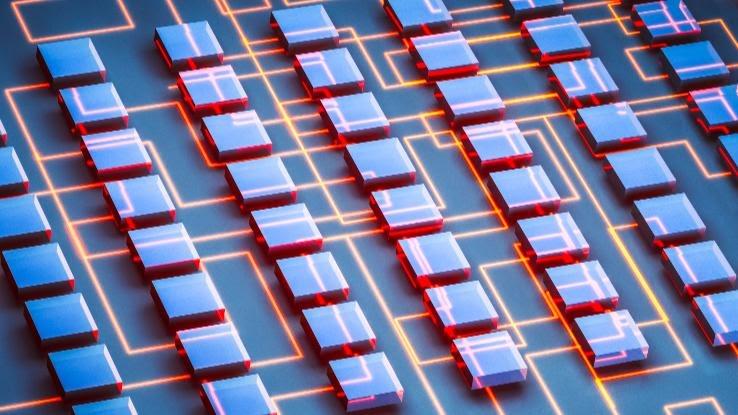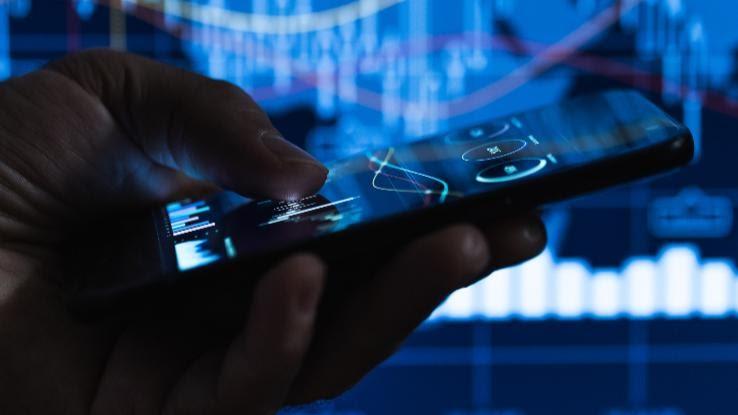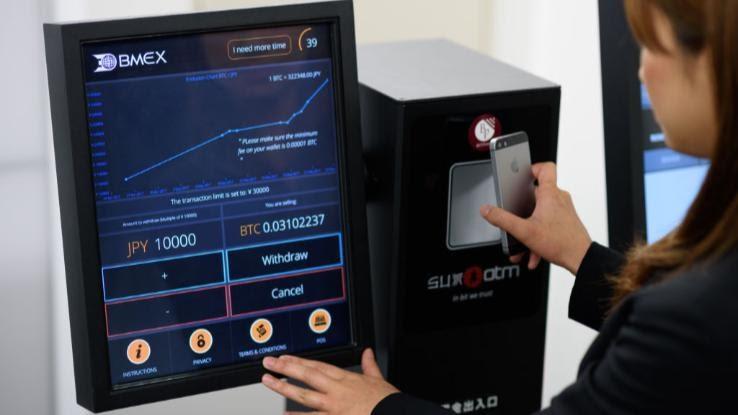What Is Blockchain Technology?

If you’re looking to start investing in cryptocurrency, you’ve probably begun seeing many more references to something called blockchain technology while doing your initial research — and maybe found yourself thoroughly confused by the concept. It sounds vaguely digital, perhaps like it’s some kind of computer part. But blockchain technology is actually a tool that’s becoming increasingly prominent in the world of finance.
Even if you’re just dipping a toe into online currencies and transactions, you’ll increase your financial fluency when you gain a better understanding of blockchain’s design, storage and potential. Take a look at the basics of blockchain technology to start learning more.
Getting Started: Blockchain Basics
First things first. A blockchain is a particular type of digital database that’s used to store a large amount of information. So what makes blockchain different from a traditional database?

One of the primary differences involves a concept called centralization. While a centralized database is accessible by a number of users at the same time, it’s ultimately stored, managed and owned by a single authority. This authority, or “administrator,” is usually a business or company, and the information is stored in a single location called a node.
Blockchain technology, such as the kind used with cryptocurrency Bitcoin, is decentralized. Decentralized applications, or “dApps,” are run on a peer-to-peer system. They’re not controlled or managed by any single authority. Instead, their information is stored and shared on a variety of nodes in many different locations. A node is simply any computer or electronic device that participates in the peer-to-peer blockchain network. All nodes maintain copies of the blockchain database instead of storing them on a centralized server.
One of the reasons that decentralized applications have become especially popular in the cryptocurrency world is that they tend to offer better security than centralized systems. Whereas a centralized system is in big trouble if a hacker is able to breach its security protections, Netsolutions explains that it’s “practically impossible to bring down a dApp because it will require a hacker to take down all the distributed hosting nodes.” That means separately accessing all the different devices that contain copies of the blockchain database — a much more time-consuming endeavor than hacking into one computer’s centralized database.
What Does the Blockchain Storage Structure Look Like?
Other key differences between a regular database and a blockchain involve the ways information is stored and which users have the ability to change it. Think of a traditional database like a bank ledger. Users can request copies of the information in this ledger, but only the owner of the database has the ability to change it in any way.

Blockchain technology, on the other hand, stores pieces of information in groups known as blocks. Any user can create new information, but once that information has been stored in a block, it cannot be manipulated in any way and is effectively set in stone.
In order to amend it, a new draft has to be submitted, and this draft is electronically “chained” to the original — thus, a chain of blocks, or “blockchain,” is formed. This creates a full, time-stamped record of a given piece of data and any changes that have been applied to it.
Think of it like writing a paper in a word-processing program. In the traditional database model, you’d simply go back over your first draft and make edits and corrections until you were ready to save your final copy. With the blockchain model, you’d end up with a series of different copies arranged along a virtual timeline. Rather than only showing your final draft, it would show each individual draft you composed, from the first to the final.
Now the question becomes: Why would you ever want to save information in this way? While it doesn’t actually make a lot of sense when it comes to writing a paper, it’s much clearer when you apply it to the world of finance.
What Role Do Smart Contracts Play?
Blockchain technology is often used in the digital-currency world to keep track of something called smart contracts. Smart contracts are more or less self-executing digital contracts that remove the need for drawing up traditional contracts on paper.

While these contracts are often used to trade cryptocurrency like Bitcoins, let’s use another analogy for the sake of clarity. Say that you want to sell something relatively expensive, like a newer car. You set up an account online to sell the vehicle on a car classifieds website, and someone contacts you wanting to purchase it for the full price. The only problem? This person is a total stranger, and you’re not sure if you trust them or the check they’re paying with.
Generally, if you’re having reservations about making the sale, you’d be wise not to go through with it without meeting the seller in person. And you definitely wouldn’t want to transfer the vehicle over to them if their check payment hadn’t cleared and you didn’t have the money in your bank account yet.
Blockchain’s smart contracts remove the need for middlemen — in this example that’s the bank, which verifies and processes the transaction before depositing the payment money into your account. The smart contracts also make it much safer to execute this kind of money-transfer agreement online. A smart contract can automatically draw up a virtual contract using code and then send a copy to both you and the buyer at the same time, unlike a paper contract that has to be copied or transferred.
By making sure that everyone has access to a copy of the agreement at once, no one has to worry that the other party made any changes to the agreement that they don’t know about. If and when any changes are made by either party, a smart contract automatically reflects that by generating a new version of the contract in the blockchain. This way, all users have access to both the old and newly amended agreements and are easily alerted to any inconsistencies between the two.
When certain conditions are met, the smart contract can also initiate the financial transaction and transfer the money directly from the buyer’s account to yours. This comes in handy when you’re making financial transactions using cryptocurrency.
What Are the Future Implications of Blockchain Technology?
As you can see, the use of blockchain technology and smart contracts is demonstrating itself to be a trustworthy and tamper-proof way to do business. The ability to conduct financial transactions with strangers virtually — which was something many people hesitated to do before because other methods were less secure — is proving to be invaluable when it comes to buying and selling virtual assets such as cryptocurrency.

As you can see from the above example, blockchain technology is quite valuable for accounting purposes because it generates such thorough financial records. And by removing the need for a financial middleman, blockchain technology may be used more in the future to make international trade agreements far cheaper in a variety of industries.
Blockchain technology also holds huge implications for philanthropic fundraising. For many non-profit and charity organizations, blockchain finance records could prove to be the key to ultimate transparency. Some governments are even looking into the potential of blockchain tech in regards to securing public records, government approval processes, budget allocation documents and more.
While it’s still a relatively new technology, blockchain appears to be one that’ll continue to grow as the world begins learning more about its possibilities.





